The End All: A Multi-Room Studio Opens On The Greenpoint Waterfront
GREENPOINT, BROOKLYN: As part of Bloomberg’s East River Esplanade project, the Greenpoint waterfront will eventually be almost all parks and paths – the first of which, Transmitter Park, is currently being constructed at the end of Greenpoint Avenue.
Edging onto the park-grounds there is a modest two-story building housing the brand-new recording studio and performance complex known as The End. Anyone would agree: the location is hard to beat.
But when Brian Binsack, Brian Crowe and Neal Sherlock first walked into this place – a sprawling but raw artists’ loft – they turned around and walked right back out.
“It was huge, and it was really trashed,” says Binsack, a composer who at the time was looking for studio space for his own productions. “It seemed like too big an endeavor.”
Only… they couldn’t get it out of their heads. Over the next few weeks, it was basically all they talked about.
“We realized we’d been looking for a space like this our whole lives,” Binsack notes. “It’s a dream we’ve had since high school.”
Binsack, Crowe and Sherlock came up together on Long Island, playing and producing music, throwing parties, and making big plans for the record labels and studios they would one day build. Seeing this space brought it all back.
They went back over to the space and began sketching out all the possibilities: recording studios, event space, live music venue, all of the above. Sherlock had taken up his family trade in the construction business, so the concept was not a pipe dream for long.
“We spent every night talking this out,” recalls Binsack. “How far should we reach with it? It’s certainly ambitious to say let’s start a recording studio and live music venue and art gallery. Actually making that a reality took a lot of us sitting down and putting our heads together for months.
“And so much was on Neal to figure out how to actually do it,” Binsack notes, adding that they also brought on a family architect and designer, David Hancock, to help advise. “We all designed it, but he built it.”
For a first legitimate studio build-out, it is indeed ambitious. The End occupies 3,500 square-feet indoors, and another nearly 2,000 square feet of prime rooftop space – the upper of which has the incredible city views.
When the three friends decided to go ahead with the project, their plans evolved to maximize the space, creating a multi-use arts facility that is roughly equal parts recording studio, art gallery and live music venue, and which can be more than one of these things at once.
RECORDING AT THE END
By the time of our visit in October, The End’s recording facilities had been officially open for business just one week. But as with most of the facility, the studios have been in use on ‘beta’ sessions since their soft opening this summer. The facility, the team and the business model have had some time to settle in.
“We came into this with one idea of what it was going to be, and it was certainly a grand idea,” says Binsack, “But then every event we had, every person we brought in, helped us evolve the business plan.”
One of the key people they met along the way was John White, a producer, engineer and musician who owned Midtown Sound in Manhattan. White came over to consult on the End’s wiring and – inspired by the space – decided to sell his studio business of 10 years and move himself into The End as resident producer.
“It took me less than 24 hours to sell my studio,” White notes. “I was out of there in less than 2 weeks, which allowed me to pop over here right away.”
With that, The End acquired the truckload of gear and know-how White amassed over a decade of running a commercial studio business in Manhattan. And they got a chief engineer who could properly put the rooms through their paces, engineering sessions as the studios were coming together.
“Throughout the summer, we’ve been recording demos for The Kin, an amazing NYC band recently signed by Interscope,” says White. “They’ve been serving as our guinea pigs to test the rooms.”
The recording studio portion of The End occupies one side of the floor, and encompasses two control rooms (A and B) tied to a few live tracking spaces. There are two live rooms right outside Studios A and B. These are sizeable rooms – on our visit, the main room comfortably fit a grand piano and full drum kit with plenty of space to spare, and the second room may be larger still, and doubles as an art gallery.
The Studio B control room can also serve as the drum tracking room in an A & B lockout situation. And tracking sessions at The End can also make use of the 1,000-square-foot live music venue on the other side of the floor.
Technology-wise, The End’s rooms are a popular mix of analog and digital gear. Studio A has Pro Tools HD and a 16-channel Neve 5465 console that sits atop a beautiful desk – made of reclaimed wood by Joel Voisard – with tall, similarly fashioned racks of choice preamps (API, BAE, Avalon, etc.), outboard processing (1176, LA2A, CL1-A, etc.), and classic effects (Space Echo, PCM-41 and MPX), with a Tascam 388 tape machine on top.
“For the way we all work today – with Pro Tools and Logic – we wanted a small analog console to be able to use that sound to mix and track through…but we also have a serious outboard collection,” White describes. “We have 18 different kinds of preamps, so we can tailor the sound really well to what you’re looking for.”
Versatility, adds Crowe, is the key to the whole operation. “We wanted the rooms to function really well for whatever might be going on, however the studios are being used – no headaches no matter what you want to do. We wanted to offer a lot of options.”
And, with that, they also wanted to ensure various revenue streams. Teaming up with White, The End founders got the reality-check only a NYC studio owner can offer.
“Having big live rooms is great, but if they’re not being used, you’re not making money,” White notes. “So we have four Pro Tools rigs here – two HD rooms, and another HD rig in the venue where we can do tracking right from the stage, and then we have a writing rig setup in the office just for getting ideas down.
“You make most of your money off your computers and your desk, so you need multiple places to be earning revenue at the same time.”
Studio B is more the artist-in-residence or group writing and production room. One early client, Anthony Hall (who also recently scored a major label deal, with Universal) was parked in B writing for a month. “We moved the specific equipment that he wanted into Studio B,” Binsack notes. “And he could work on his demos and feel comfortable in there.”
He also felt comfortable writing on the roof, Sherlock adds. “Anthony let the producers stay in the room and do their thing and he’d go up on the roof with his acoustic and work on the song they’d be recording the next day.”
Hall found The End like other of its clients have and will – he was booked to play a show there. This, the founders say, was all part of the design.
“If you’re going to do a music and art space, you have to involve the whole creative community,” says Binsack. “We have art shows, private events, music events, and audio/visual installations. By involving the whole community, from the local music store to the Northside Music Fest, who’s launch party we hosted, to art shows, to fundraisers, we’ve done our own advertising. A friend tells a friend tells a friend.”
In Hall’s case, it was a Sofar Sounds session in July that brought him in as a performer.
“He fell in love with the place,” says Binsack. “He had plans to record in Florida, but when he realized we were almost done with the studio, he canceled that and came here.”
PLAYING THE END
“Another way John helped us with our business plan was by pointing out that a studio is empty 50% of the time,” says Binsack. “So [we asked ourselves] if it’s not being used for recording, how do we still get the creative community in here?”
Where Binsack is a composer and Sherlock a musician and builder, Crowe’s specialty and focus is the live sound side of the business.
Perhaps the biggest “whoa” moment in a tour of The End happens when you walk down a narrow hallway into the 100-capacity live music venue with its wall of windows overlooking the city.
The venue and this side of the floor, including a full kitchen, lounge and bathrooms, has a separate entrance, through the park and up a set of outdoor steps. They could ostensibly host a live show or event while recording and writing sessions are going on in Studios A and B.
As a venue, The End is equipped to accommodate a diverse program of performances and events. In-house, they are also developing a concert series to happen at “the end” of each month.
“Musicians will feel like they’re in a really well-equipped venue,” Crowe notes on our tour of the space. “We have killer backline – a full drum set, Marshall heads and bass amps, LCD screens and lighting panels and effects, not the typical setup at all.”
The End has already hosted multiple music video shoots, rehearsals and showcases – for which in this neighborhood there will be no shortage of clients. And there are plenty of ways the studios’ clients can make use of the performance space as well.
“If you’re recording here, you’re getting a showcase here too,” assures Crowe. “We want you to have a show. Here’s a stage, invite your label people and local fans to come by, and play a showcase, have a listening session.”
The venue also increases the studio’s flexibility with clients on a fixed budget. “If you have $500 and five songs to record, you could totally setup on the live stage and record right from there,” says White.
Having engineered many a jazz session, most recently with Jon Irabagon and Barry Altschul, White is also eager to get a full band jazz session going in this room.
“This is bigger than a lot of the rooms that some of the biggest jazz records were done in back in the day,” he points out. “To be able to have a room in NY these days where you could put a full big band or a monster string section, it just doesn’t happen. There’s only a very few rooms anymore that have this. There are a few left in Midtown, but they’re pretty pricey.”
And none of them have a view quite like this one.
As for convenience, the studio is located in one of the highest musicians-per-capita neighborhoods in the area – close to the G train and not far from the L. And it’s positioned right at the new East River Ferry stop. That’s 5 minutes over to Manhattan (and you can bring your bike!).
After all, this story begins and ends with the location – the End’s most unique offering. It inspired these guys to follow their dreams, and it will likewise inspire the songwriters, musicians and producers who find their way here.
For more information, visit http://theendnyc.com.
Please note: When you buy products through links on this page, we may earn an affiliate commission.







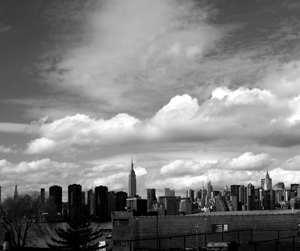
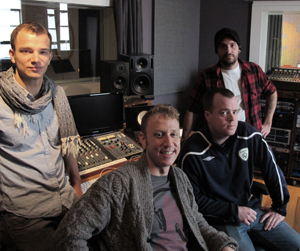
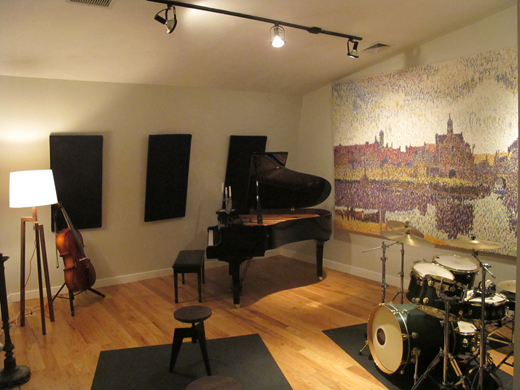
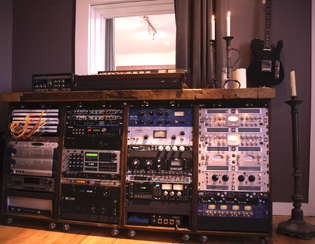
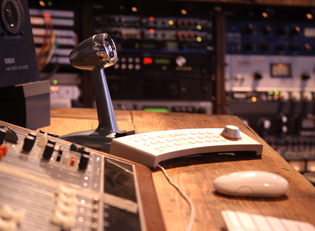
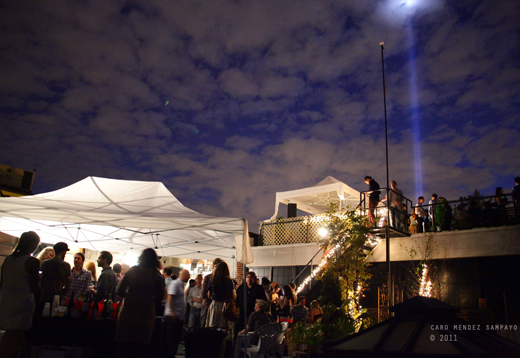
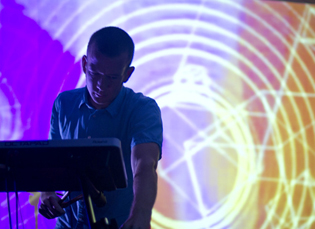
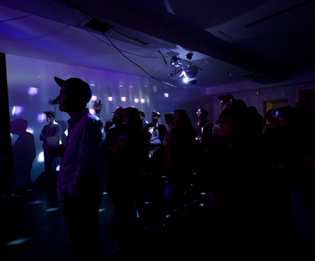
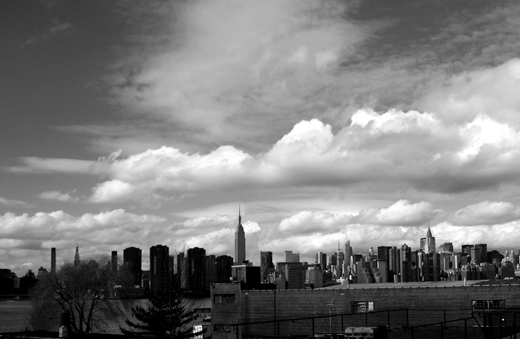
Benedette Long
November 14, 2011 at 2:51 pm (13 years ago)Can’t wait for the upcoming ARTOFF PAPER show 11/26/11 8:00 pm…great venue, affordable wearable art, …even greater artists